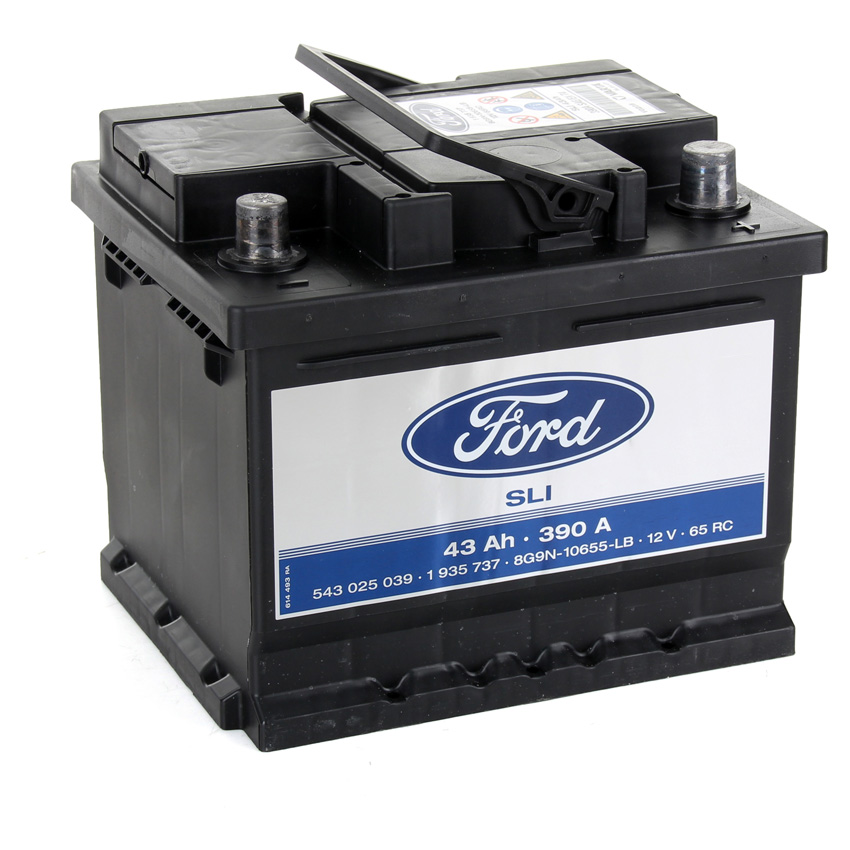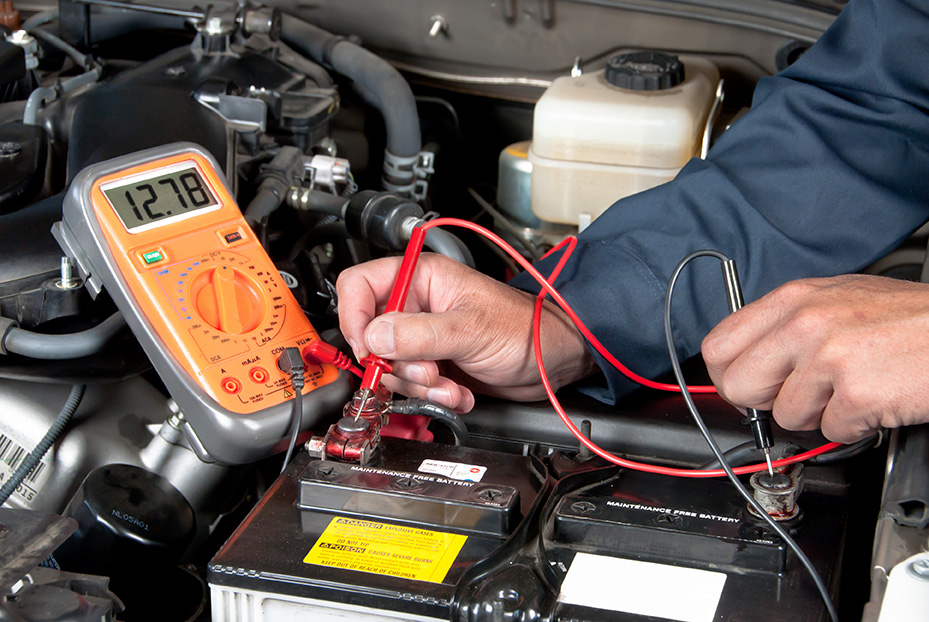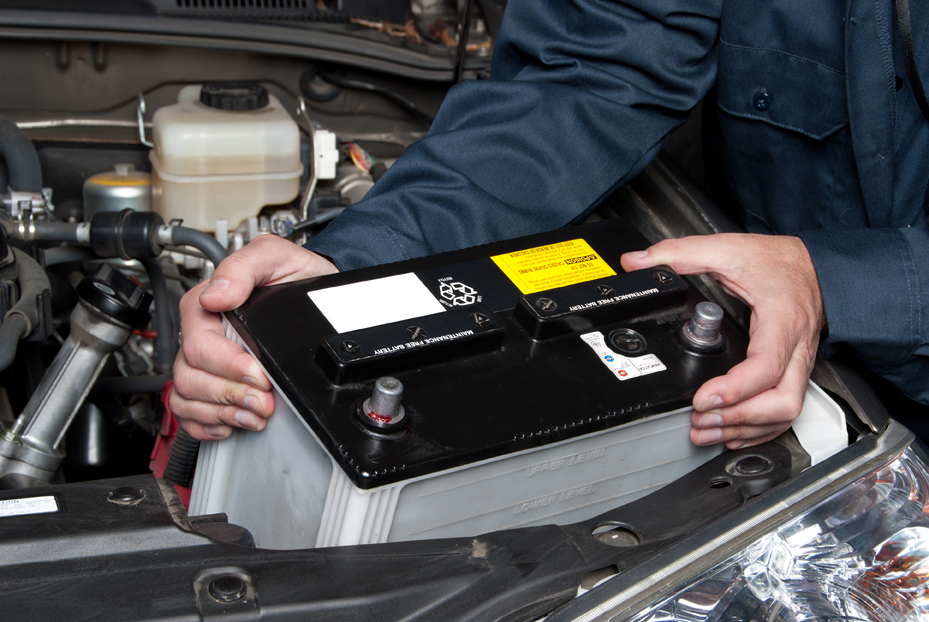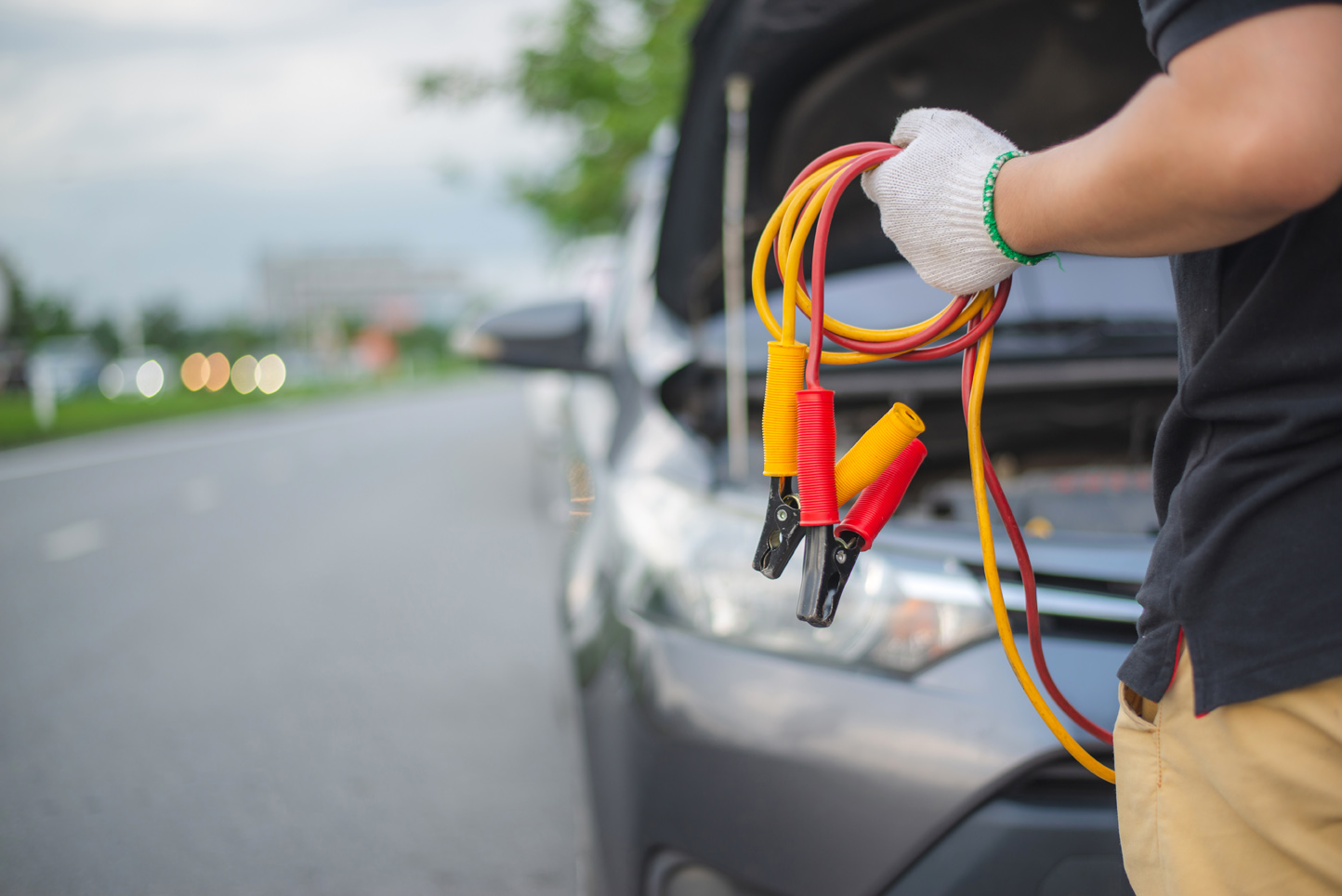What are the biggest power guzzlers?
Vehicle batteries help to start the engine by supplying the starter and important assemblies with power. But much more important is their function when the engine is not running. This is because the required power for all switched-on consumers comes exclusively from the battery. The more consumers that are switched on, the greater the power consumption, of course. In modern vehicles, in which more and more electronics are installed, the consumption is sometimes generally higher than in older vehicles. If, however, the winter with cold temperatures is added, the car battery is even more heavily loaded. This is due on the one hand to the fact that the chemical processes run more slowly and on the other hand to the fact that additional consumers are needed.
For this reason, it is worth knowing the biggest power guzzlers:
| Power guzzler in vehicle | Watt
|
|---|
| Motor management | 180 W
|
| Dipped beam | 150 W
|
| Heatable rear window | 120 W
|
| Fog lamp | 100 W
|
| blower interior | 80 W
|
| Screen wiper | 80 W
|
| Additional heating | 80 W
|
| fuel pump and fuel injection | 60 W
|
| Headlight washer | 60 W
|
| Seat heating | 60 W
|
| Radio with CD changer | 60 W
|
| Rear window wiper | 50 W
|

As soon as the vehicle drives, the alternator takes over the power supply. Of course, the more revolutions per minute, the more watts are generated. In idle, on the other hand, just 150 watts are generated. Conversely, this clearly shows that as many consumers as possible should be switched off when the engine is stationary or even switched off.
How long does a battery last?

Vehicle batteries do not have a classic expiry date. However, manufacturers specify certain time periods until which the battery should be inserted. Only after this date is it necessary to recharge the battery before it can be installed in the vehicle. The time span varies from manufacturer to manufacturer. At Opel, for example, it is a maximum of 12 months, at VW 15 months and at Ford up to 18 months. Basically it can be said that the voltage should not fall below 12.4 V during installation. All batteries under 11V can not be saved by charging, because the decomposition process is already too advanced and the required power can no longer be called.
How long a built-in battery lasts depends on the type of battery and the ambient temperature. Lithium-ion batteries, for example, discharge at around 20° Celsius by just 2% per month. With lead-acid batteries, the value of self-discharge varies between 4-6%, with others it can also be 10% and more. In addition, a modern vehicle also consumes electricity when it is switched off, as many control units and electrical consumers remain active even when switched off. This discharges a battery on average within 3 - 4 weeks.
But more exciting is the question of how long a car battery lasts if other power consumers remain switched on. It is not unusual to forget the active indicator when parking in the evening or to leave the lights on. But does that really mean that the battery is dead in the morning? Not necessarily. Depending on the ambient temperature and if the battery is intact, the car can still be started without any problems even after 10 hours of continuous light.
It is different if the hazard warning light would illuminate the night. Here the battery would be completely discharged after 5 - 6 hours at the latest. Also the car radio with switched off engine simply run, costs electricity, which depending upon achievement of the radio, a fast battery death would cause. The discharge time, however, always depends on the ambient temperature. The colder it gets, the faster the car battery loses power. For this reason a car battery often gives up its ghost in winter.
How to extend the life of a car battery?
It is very easy to extend the life of a car battery. Even though most car batteries today are considered to be maintenance-free, it is still worth spending some time on them from time to time. The following tips are quick and easy to follow:
- Carry out regular journeys of at least 30 minutes or charge the car battery with a charger every 1-2 weeks
- After longer standstill of the vehicle or after longer discharge by electricity consumers, a longer journey is mandatory
- Unnecessary power consumers such as radio, heating, lights only switched on when the motor is running
- In winter: Only switch on the lights, windscreen wipers, radio, fan, heater, rear window heater and seat heater when the engine is running and switch them off again as soon as they are no longer needed
- keep an eye on the liquid level, keep the poles clean and coat with polar grease, at least 1x a year
- Check battery voltage every two weeks with a voltage indicator
- Car batteries do not tip over a longer period of time, as corrosive acid may escape
- Help in the correct order
- Do not electrostatically charge the battery case during cleaning
- carry battery carefully
- avoid overcharging with an external charger
How to detect a low battery?
In modern vehicles there are so-called "intelligent battery sensors" that constantly measure the voltage, current and temperature of a car battery. They inform the driver accordingly if the values are outside the norm. In addition, everyone can of course measure the voltage themselves with a voltage indicator.
However, there are also two very practical indicators that speak for a weak battery. The first is when the starter doesn't start the first time. The second indication is when the low beam quickly darkens after switching off. Then a longer drive is advisable to recharge the battery.
How to change the car battery?
help longer journeys and the other tips mentioned no longer to refresh the battery voltage, a battery change is necessary. There is a lot to consider here. For example, all power consumers must be switched off before the vehicle battery is removed. In addition, first remove the negative pole cable and then the positive pole cable. It is recommended to wear gloves in order not to injure yourself with any leaked acid. The new car battery used should be the same battery type and have the same dimensions as the old battery. However, a starter battery with higher performance can be used. Please also pay attention to a high quality, as for example Original Starterbatteries of the vehicle manufacturer guarantee.
It is important to clean the contacts before installation and spray them with pole grease or pole spray. This is the only way to protect them from oxidation. The new battery is then connected first to the positive pole and then to the negative pole. After installation, it is necessary to register the new battery in vehicles with an energy management system so that the battery sensor delivers correct values. It may also be necessary to re-activate some power consumers by code after the battery has been changed. These include car radios, electric windows and alarm systems.

How does a jump start work?
However, a new car battery or charger is not always at hand. Many therefore try to push the car first. However, this is only possible if there is still a residual voltage in the battery and the vehicle has a manual gearbox. Please do not try with a vehicle with automatic transmission!
The procedure for pushing the clutch is as follows: In the breakdown vehicle with the ignition switched on, engage second gear and let the clutch come after a few metres. But beware, if the car does not start at the first meters, unburned fuel can get into the catalytic converter and damage it.
A more sensible alternative to pushing is to charge the car battery using a jumper cable and another vehicle. It is important that both vehicle batteries have the same voltage and that the vehicles are not standing in the rain or that the terminals do not come into contact with water. In addition, the following steps should be performed in advance:
- Switch off all power consumers such as radio, heating, light etc.
- hand brake applied
- take gear out
- Switch off motor
Next, attach the red jumper cable to the positive terminal of the donor vehicle and then attach it to the positive terminal of the empty battery. Now connect the black starter cable to the negative terminal of the donor battery first. Attach the other end to an unpainted metal part in the engine compartment of the breakdown vehicle. This can also be a part of the bodywork. Important: Do not attach the black cable to the minus pole of the empty battery!!!
If all jumper cables are attached, the intact vehicle can be started and then the breakdown vehicle. However, the start attempt should not last longer than 15 seconds. If nothing happens at all, all pole clamps should be checked again for correct seating. If still nothing moves, the vehicle must be towed to a workshop. If, on the other hand, the starter motor goes off but the engine does not start, the process must be stopped immediately. Obviously there are more defects than a weak battery. An expert should then take a closer look at the car here.
However, if the breakdown vehicle could be started, the engine must continue to run and one of the larger electrical loads such as the fan or the rear window heater must be switched on. Meanwhile the jumper cables can be removed again. It is important to disconnect the black cable first, then the red cable. Then switch off the electrical consumer again, but keep the motor running.
The breakdown vehicle should now be used for a longer overland journey. Otherwise, it is essential to hang the car on a charger so that the vehicle battery can be fully recharged. If it is not possible to fully recharge the car battery, a battery change is unavoidable.
A very popular alternative is a starting aid, where the two vehicles are connected with a special starting aid cable via the cigarette lighter. However, it should be noted that most cigarette lighters only work when the engine is switched on. In addition, neither the electronics nor the wiring and electrical protection of the cigarette lighter are designed for such high current flows. We therefore recommend that you better use the conventional method of jump starting.
Regular care increases the life of the vehicle battery
In general, you should avoid deep discharges in your car battery. In conjunction with the tips listed above, it is therefore easy to extend the service life of the vehicle battery. Once it has come to an end, it is worth paying attention to high quality when choosing a new car battery. Our service team will be happy to advise you.



